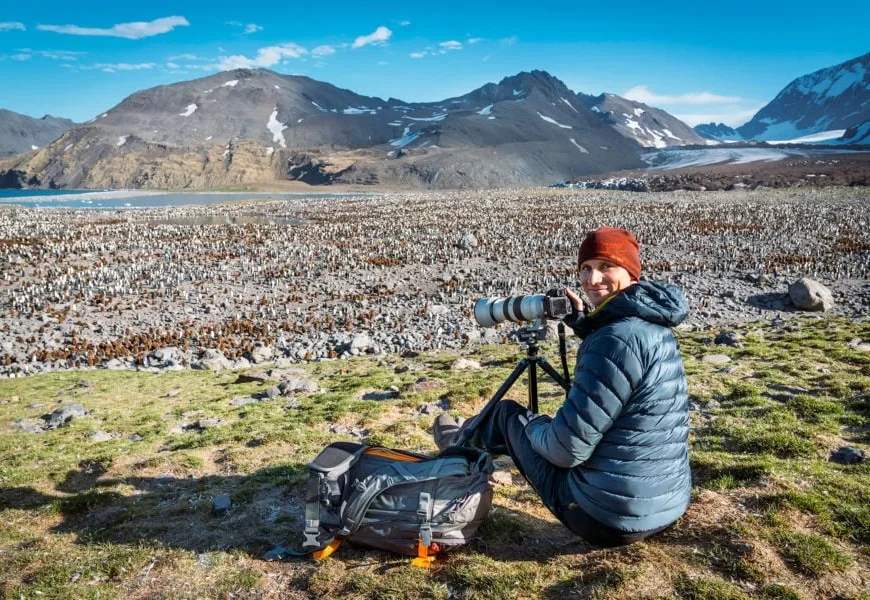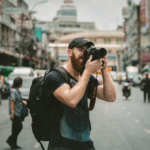Travel photography is an incredible way to share the experiences, cultures, and landscapes you encounter while exploring the world. But to stand out from the crowd, you need to go beyond the basics and elevate your skills to capture images that tell a story. Whether you’re capturing the vibrant streets of a city or the serene beauty of a remote landscape, advanced techniques can help you refine your style, improve image quality, and give your travel photos that “wow” factor.
Developing a Unique Photography Style
Every great travel photographer has a distinct style that sets their work apart from others. Developing your style may take time, but it’s an essential part of elevating your photography.
Begin by experimenting with different photography genres within travel, whether it’s street photography, landscape, or portraiture. Over time, you’ll discover your strengths and preferences, whether you lean toward moody, atmospheric shots, or bright, vivid images that highlight color.
Editing also plays a big role in defining your style. Consider a consistent color palette or tone for your images. This can be achieved using photo editing software like Lightroom or Photoshop, where you can create custom presets that match your vision. Pay attention to small details such as contrast, saturation, and sharpness, as these will help you develop a signature look for your travel photos.
Creating a Narrative with Your Photos
Travel photography isn’t just about taking beautiful pictures; it’s about telling a story. Your photos should take the viewer on a journey, allowing them to experience the same sights, emotions, and moments that you encountered.
To create a compelling narrative, think about what story you want to tell with your photos before you even start shooting. It could be the tale of a bustling city, the quiet solitude of nature, or the interactions between people in a local market. Once you have a theme in mind, focus on capturing images that represent various aspects of that story—from wide-angle shots that set the scene, to close-up details that give context and texture.
Consider how you can guide the viewer’s eye through the sequence of photos. Starting with an establishing shot of a location, followed by action or interaction scenes, and finally, ending with a closing image can help wrap up the story in a cohesive way.
Mastering Advanced Composition Techniques
Once you’ve got the basics of composition down—such as the rule of thirds and leading lines—it’s time to explore more advanced techniques to make your photos stand out.
One technique to try is symmetry. Finding symmetry in architecture, reflections, or landscapes can create a sense of balance and harmony in your images. Another is negative space, where you intentionally leave large areas of your image empty to draw attention to the subject. Negative space is especially effective in minimalist photography and can evoke a sense of calm or isolation.
Layering is another powerful composition tool. By including foreground, middle ground, and background elements in your shot, you create depth and dimension that draws the viewer into the scene. This technique is particularly effective for landscape photography, where different elements of nature can add layers of interest to the image.
Using Motion to Create Dynamic Images
Incorporating motion into your travel photography can bring life and energy to your images. Whether it’s the blur of people walking through a busy street or the slow movement of water over rocks, motion can create a sense of time passing and add emotion to your photos.
One way to capture motion is through long exposures. This technique is particularly effective when photographing waterfalls, rivers, or moving clouds. By slowing down your shutter speed, you can blur the motion of the water or clouds, giving the scene a dreamlike quality.
If you’re in a city or crowded place, try experimenting with panning. This involves following a moving subject, such as a cyclist or vehicle, with your camera while using a slower shutter speed. The result is a sharp subject with a blurred background, conveying speed and action.
Maximizing Natural and Artificial Light
Lighting is one of the most important factors in photography, and learning how to master both natural and artificial light can take your travel photos to the next level.
Start by understanding the golden hour—the time just after sunrise and before sunset when the light is soft and warm. This is the ideal time for shooting landscapes, cityscapes, and portraits, as the natural light enhances the colors and creates beautiful shadows. But don’t be afraid to shoot during blue hour, the period after sunset or before sunrise, when the sky takes on a cool, moody tone.
For night photography or indoor settings, mastering the use of artificial light is essential. Bring a portable LED light or use available sources like street lamps, neon signs, or even candles to illuminate your subject in creative ways. Be mindful of how different light sources affect the mood of your image. For example, warm artificial light can make an interior feel cozy, while harsh, direct light can create dramatic contrasts.
Post-Processing: Enhancing Without Overdoing It
Post-processing is where your photos truly come to life, but it’s essential to find the right balance between enhancing your images and keeping them realistic.
Start by making basic adjustments to exposure, contrast, and white balance. From there, fine-tune more detailed aspects like highlights, shadows, and clarity. Always strive to enhance the natural beauty of your subject without making it look over-processed or artificial.
One powerful tool in post-processing is dodge and burn. This technique allows you to selectively lighten or darken areas of your image to add depth, focus, or drama. It can be particularly effective in highlighting key elements in a landscape or portrait.
Color grading is another critical element of post-processing. By adjusting the hue, saturation, and luminance of different colors in your image, you can create a consistent and cohesive look that reflects your personal style.
Capturing the Essence of People and Cultures
Travel photography isn’t just about landscapes; it’s also about the people and cultures you encounter. Capturing authentic and respectful images of locals can add depth to your portfolio, but it requires a thoughtful approach.
Whenever possible, engage with your subject before photographing them. Striking up a conversation, learning about their story, or simply showing interest in their life can lead to more natural, genuine expressions in your photos. Always be respectful of cultural sensitivities, and when in doubt, ask for permission before taking someone’s photo.
Focus on capturing candid moments rather than posed portraits. Candid shots tend to feel more authentic and can convey the personality and environment of your subject in a more genuine way. Whether it’s a vendor preparing food at a market, a child playing in the streets, or a craftsman at work, these everyday moments tell a powerful story of the place you’re visiting.
Staying Creative Under Challenging Conditions
Travel photography often involves working under less-than-ideal conditions, whether it’s unpredictable weather, limited time, or language barriers. Instead of letting these challenges frustrate you, embrace them as opportunities to get creative.
If you’re shooting in the rain, for example, look for reflections in puddles, capture the drama of raindrops on a window, or use an umbrella as an unexpected compositional element. In low-light conditions, play with long exposures or silhouettes to create atmospheric shots that wouldn’t be possible in brighter settings.
When dealing with language barriers, learning a few basic phrases or having a local guide can make it easier to communicate with people you want to photograph. Even when words aren’t an option, a friendly smile and showing your interest in their world can go a long way.
Planning Ahead for Epic Shots
Preparation is key for capturing breathtaking travel photos. Before you set out on your trip, do some research on the best photography locations in your destination. Use apps like Google Earth, Instagram, or photography blogs to find unique viewpoints or hidden gems that aren’t overrun with tourists.
If you’re planning to shoot a specific landmark or natural wonder, scout the location beforehand and visit at different times of day to understand how the light interacts with the landscape. Early mornings are often the best time to capture famous sites without crowds, while sunsets can offer magical lighting for landscape photography.
Lastly, don’t forget to have a flexible mindset. Even with the best planning, travel photography requires adaptability. Be open to spontaneous moments and unexpected detours—these often lead to the most memorable and unique photos.



